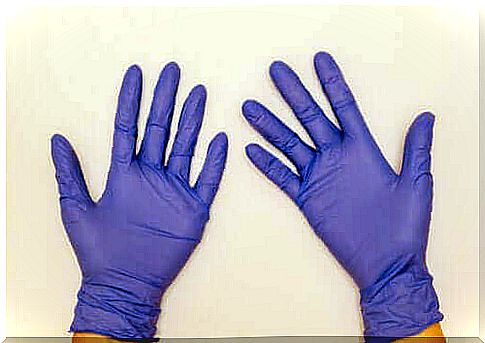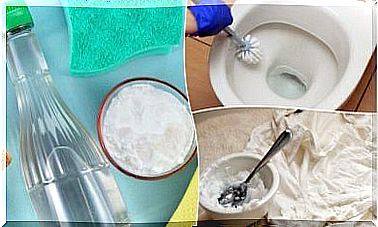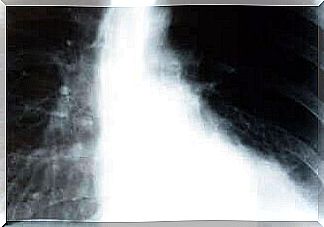Causes And Symptoms Of Latex Allergy And Treatment

Some people have symptoms of allergy to latex, a material made from the juice of the Brazilian rubber tree ( Hevea brasiliensis ). This material is also known as “natural rubber”, and many products we use every day are made from it.
Latex allergy occurs when a person’s immune system overreacts to certain proteins found in this material. This is because companies use it to produce many items we come in direct contact with every day.
Estimates indicate that approximately four out of 100 people in the population have latex allergy. For example, about 10 out of 100 healthcare professionals are allergic to it. This is challenging for this group, as many medical products are made from or contain latex.
Symptoms of latex allergy

The main characteristic of latex allergy is itchy skin or hives. It can also manifest itself as eye irritation, watery eyes and redness of the nose. It can even lead to anaphylaxis in severe cases. This reaction can be life threatening as it leads to swollen throat and difficulty breathing.
Causes and symptoms of latex allergy: Causes and risk factors
Latex is a natural product that consists of several components, including proteins. These are the main agents responsible for producing allergies. This is because the small particles released from products made with this material enter the body when it comes in contact with the skin or through the lungs when we breathe.
Some people who are allergic to latex cannot identify direct contact with this material. In these cases, specialists believe that they came in contact with someone who carried particles on the skin or clothes.
Others also suggest that it may be due to indirect contact, for example through food handled by people who wore latex gloves.
Probably allergic people are not born with this problem, but develop it with repeated contact with this material. In fact, symptoms often appear only after months or years of first contact with the latex.
Which products contain latex?
These products are everywhere and people use them because they are soft and resistant.
Products for medical use
This is a frequent component of medical devices such as:
- Disposable gloves
- Syringes
- A stethoscope or a blood pressure monitor
- Respiratory and intravenous needles
- Bandages
Some countries have regulations for the use of medical devices that contain latex, and users must state this to avoid coming into contact with allergic people.
Symptoms of latex allergy: Everyday products
Many everyday products contain latex in some form of natural rubber, for example:
- Balloons
- Rubber bands
- Condoms and pessaries
- Gloves
- deck
- Toys
- Handles on objects
In general, these products rarely cause problems, except in extremely sensitive people.
Other products
There is a link between allergies to certain foods and latex. This is because some foods contain the same allergens as latex. Some of them are:
- Avocado
- Celery
- Banana
- Passion fruit
- Kiwi
- Chestnut
This is important because people who are allergic to latex are more likely to be allergic to these foods or at least have a cross-reaction.
Symptoms of latex allergy: Diagnostic tests
Diagnosing a latex allergy is a challenge, as with many others. Your doctor will examine your skin and ask questions about your symptoms and also look for specific data to rule out other causes of the symptoms.
They can order a skin reaction test to determine if it reacts to latex proteins. They will insert a small needle on the skin of the forearm or back to inject a small amount of latex to find out.
They then interpret the result after the skin reacts with the sample. A person who is allergic to latex will show inflammation where the doctor applied latex. Only a specialist should do this test, an allergist or other doctor with experience in skin testing and reactions.
Available treatments

Some medications can reduce the symptoms, but it is important to emphasize that latex allergy has no specific cure. The best way to avoid allergic reactions to latex is to avoid using products that contain it.
Your doctor may prescribe antihistamines or low doses of corticosteroids when the reactions after contact with latex are mild. These medications help control the reaction and relieve possible discomfort.
However, you may have unintentional contact with latex products even if you try to avoid them. You may want to always have an autoinjector with adrenaline at all times if you have previously had a severe allergic reaction to these products.
Go to the nearest emergency room for immediate treatment in case of an anaphylactic reaction.
Prevention of latex allergy and recommendations
People who are allergic to latex must inform all healthcare professionals who visit them as hospitals use the most products that contain latex. In the same way, work in a hospital environment is one of the most important factors in developing latex allergy.
Another form of prevention is to replace products made with latex with those made with different materials. There are latex-free gloves, bandages, condoms and toys on the market.
In addition, you must avoid the fruits mentioned above to avoid an allergic reaction due to the type of proteins they contain.
Latex allergy is a complex condition
Finally, timely diagnosis is crucial in these cases, and there is a delay in diagnosis in many patients. It can take two years from the onset of dermatitis for asthma symptoms to appear.
Some of the most important measures are to use latex-free products and inform healthcare professionals about your allergy before any procedure. Thus, this is the best way to avoid direct or accidental contact with the latex.









